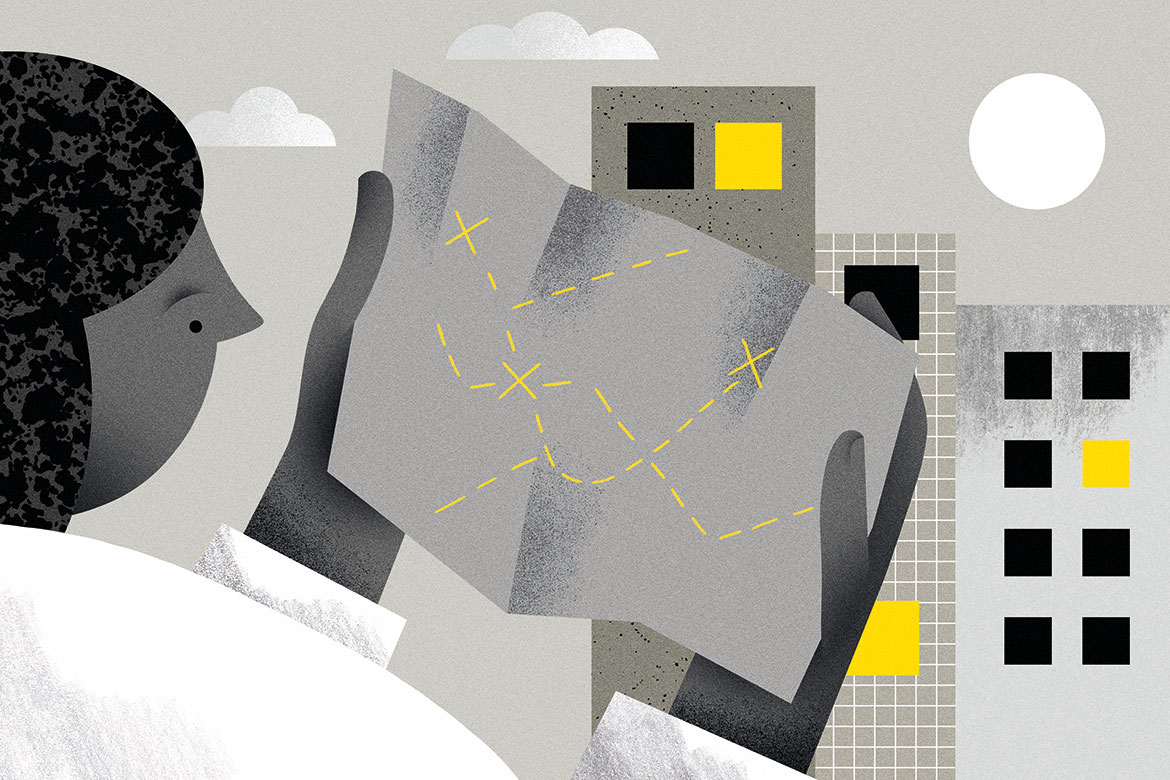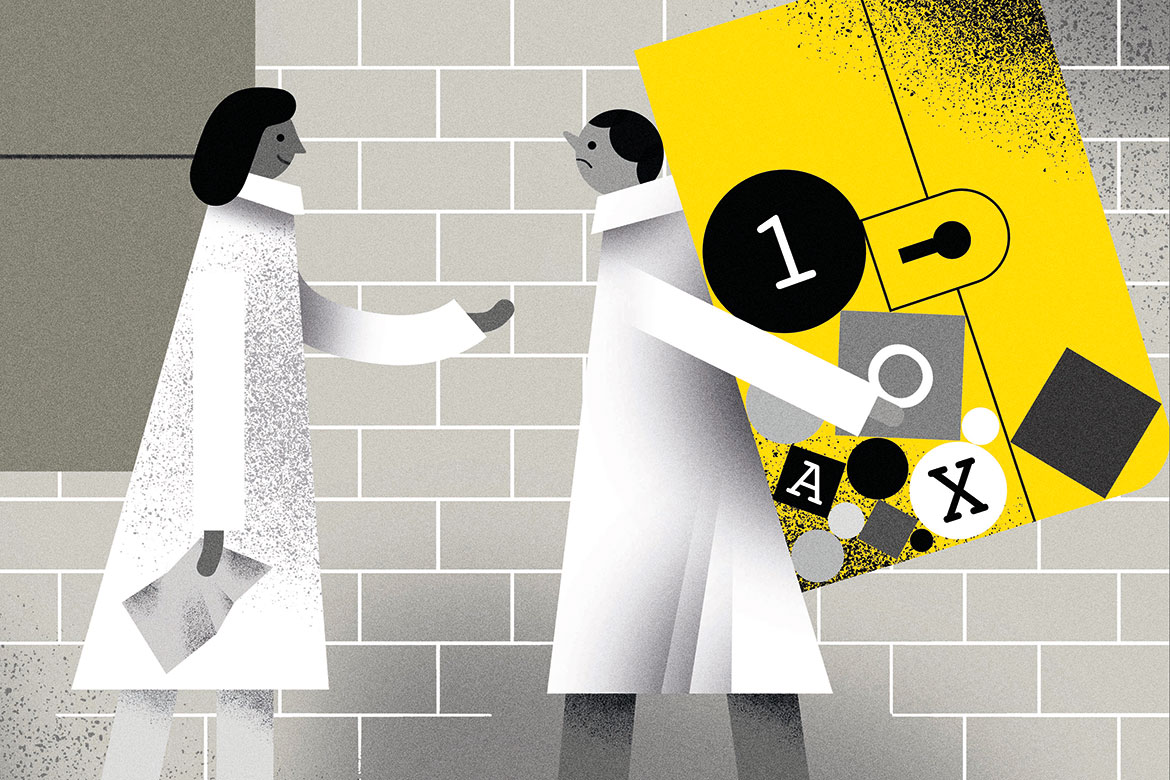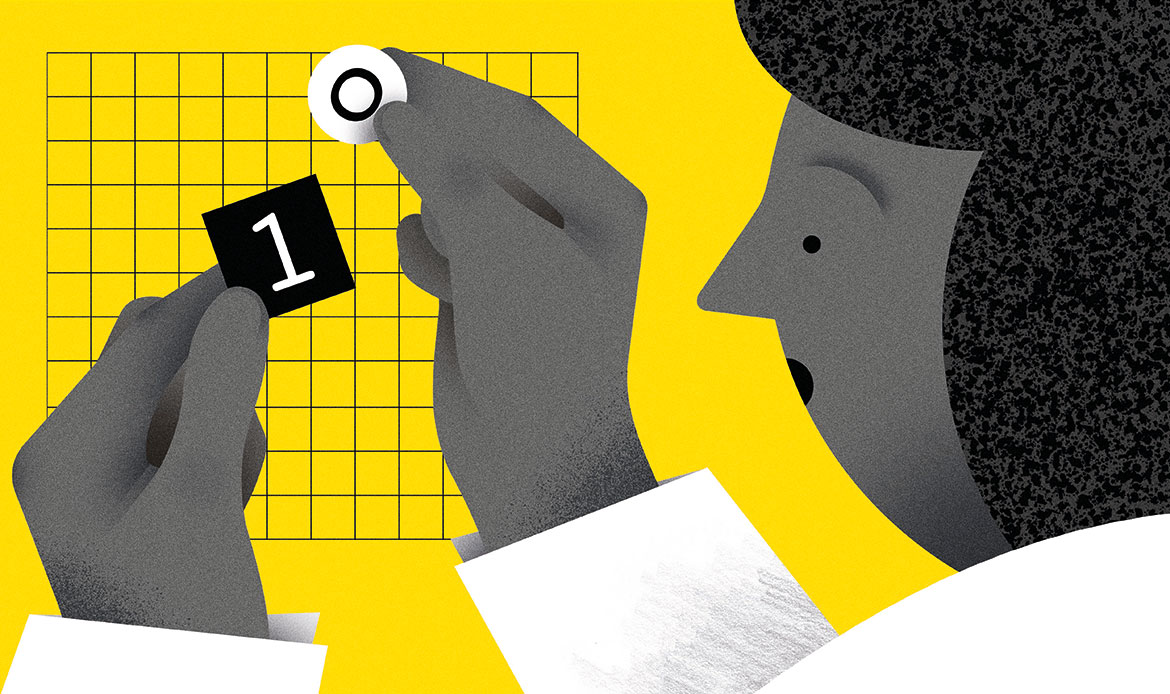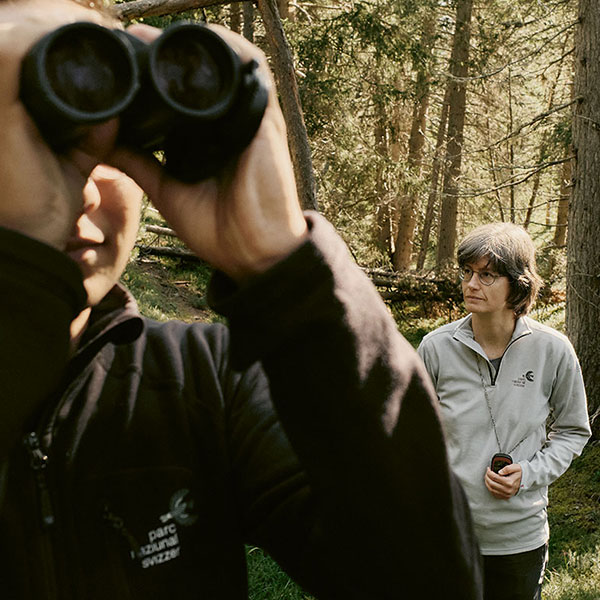Feature: Patient data
Hunting for the Holy Grail of medical data
Switzerland’s data landscape is like a jungle, and it’s an overgrown path for health researchers wanting to find their way through it. We join them on their expedition.
In hospitals, in doctors’ practices, in the lab, at every medical check-up and with every treatment: we are generating ever more health data, and they hold immense potential for medical research. Marloes Eeftens would like to help realise this potential. She’s an environmental epidemiologist at the Swiss Tropical and Public Health Institute in Basel, and she wants to correlate patient data on diseases and deaths with pollen measurements. In this way, she hopes to shed light on the health consequences of our increasing exposure to pollen. This is not least because there are indications that allergic reactions are partly linked to severe health incidents, e.g., illnesses, asthma attacks and heart attacks. However, like many other researchers, Eeftens’s initial finding was more prosaic: namely that trying to conduct research with health service data in Switzerland needs patience, nerves of steel and perseverance.

Are the data held by a canton, by the federal government – or perhaps by the operator of a smartphone app? | Illustration: Elena Knecht
1 – No prospects of a central information provider
Health data are widely scattered across various sites: cantons, municipalities, national authorities, hospitals, doctors’ practices, health insurers and many more. You will search in vain for any overview. Eeftens, for example, only found data on allergic reactions thanks to a colleague: “There are two smartphone apps that are used pretty frequently in which thousands of people with hay fever have been recording their symptoms for years. All this data was with the operators of the apps, but nothing was being done with it”.
But even the data generated by the health authorities and institutions are stored in separate databases that are often little-known. This fragmentation into so-called ‘data silos’ is a major obstacle for younger researchers in particular, says Bernice Elger from the Institute of Biomedical Ethics at the University of Basel. This became clear through an ongoing study in which she and her team are analysing possible solutions for linking up health data in Switzerland.
“There are researchers, especially those who are well-established and have years of experience, who know exactly where to find what data”, says Elger. “But for many, the Swiss data landscape is more like a jungle”. Elger’s colleague Lester Geneviève has analysed numerous datasets and also points to widespread problems with their quality: “Often, datasets have large gaps, they contain many duplicates and coding errors, or there is a lack of any kind of information about just how the data was collected”. They both agree that this absence of an overview and the shortage of transparency is a hindrance to a lot of good research.

“May I also analyse that?” – “Hey, what do you want with my valuable data?” | Illustration: Elena Knecht
2 – Widespread scepticism among data owners
Finding useful data is one thing, but gaining access to them is quite something else. The owners of the data have to be willing to make them available for a specific research project. This in turn often depends on how established and well-connected the researchers are, says Eeftens: “Many researchers have to go to great lengths simply to convince sceptical data owners that it is worth their while to organise their data and make them available for a specific project”. All the same, most data owners are essentially willing to do this, he says.
But according to Eva Blozik, the head of health-services research at the medical insurer SWICA, it’s not that simple. Health insurers are often asked for data, but they are legally obliged in every individual case to clarify whether such disclosure would comply with data protection laws. And besides federal laws, every canton has its own, separate data protection laws, and these too have to be taken into account.
Many of those requests, however, bring a different problem to the fore. “Our data are geared towards fulfilling the tasks of a health insurance company – such as issuing premiums and invoicing for services”, says Blozik. “But researchers are not usually interested in individual billing items. They want to know how frequently a certain illness occurs, for example. In such a case, the owners of the data – together with the researchers – first have to take a close look both at the research project and at their own data. “It often turns out that the design of the planned study is just not feasible”, says Blozik. “And if we are indeed able to prepare the information they want, it can sometimes be very time-consuming”.
In Blozik’s opinion, the situation could be improved by setting up a new, central advisory office – perhaps run by the SNSF – with which researchers could discuss their projects before approaching the owners of the data they need. This would enable them to clarify numerous questions in advance about the best possible design of the study, about the composition of the different datasets and about data protection issues.

Filling out 54 different forms to justify a data study – that’s a fact, not a joke! | Illustration: Elena Knecht
3 – Obligatory documentation – to the point of despair
Even once the data have been made available, researchers still need to seek the approval of an ethics committee. This is at least the case when they want to work with case studies, because they are especially worthy of protection. So cantonal ethics committees assess each project on the basis of the Human Research Act in order to determine whether it is meaningful, and whether the data involved will be used responsibly, safely and ethically. “That’s important”, says Eeftens, “and I’ve only ever had positive experiences with regard to the efficiency of the ethics committees in granting approval”.
But things don’t stop there. Researchers are obliged to provide the ethics committees with extensive documentation until their project has been completed. “For our last study, we compiled 54 different documents, some of them in several versions and languages”, says Eeftens. “We had to provide several hundred pages of documentation for the ethics committee”. Such an effort is too great for smaller projects to manage, she admits, and the question soon arises as to whether it’s all really worth it, and whether or not it’s even possible within a project’s budget. She adds that it is hardly an obstacle for large, multi-million-franc projects, but merely serves to hinder young researchers – the very ones who might be coming with new ideas.

The lung function of one person isn’t necessarily the same as the lung function of another. Sometimes they’re like apples and oranges. | Illustration: Elena Knecht
4 – Ultimately, nothing fits together
Researchers usually gain new insights by combining health data from different sources. But this raises another question: Can the data even be linked and compared at all? Eeftens recalls a study in which she wanted to combine data from different datasets on the lung function of patients. “It turned out that there are very different ideas about how to measure lung function”, she says. And that severely limited the possibilities for subjecting all the data to a joint evaluation process.
Torsten Schwede is a bioinformatician at the University of Basel and until last year he chaired the National Advisory Board of the Swiss Personalized Health Network (SPHN). He is of the same opinion as Eeftens: “In Switzerland, health data are collected using all manner of methods, stored in a wide variety of formats, encoded differently and processed using many different kinds of technological solutions for data encryption and transfer”. This results in what experts call a lack of interoperability.
But there are solutions to this, says Schwede. “International standards have become established for the semantic encoding of most health data. If we want to get more out of our health data, we have to enforce these standards consistently, just like other countries do”, he says. “Ideally, we would introduce uniform electronic health records in which clear standards are prescribed for both treatment and research purposes”. But that’s easier said than done in Switzerland. This is why researchers like Eeftens, who work with data from the Swiss health system, will continue to need patience, nerves of steel and perseverance.




